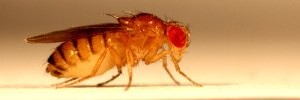Personal website
Research
My research seeks to understand the role muscle and tissue mechanics play in transforming a flying insect’s body dynamics into sensory input and how this information is used to control reflex and voluntary maneuvers. Insects possess numerous sensory structures that enable them to detect and correct their flight posture, wing motions, and various other kinematic parameters. Although vision is the most prominent modality used to control flight, mechanoreception offers feedback on a more rapid timescale than the eyes and many insects use specialized mechanoreceptive organs that are actuated during flight to aid the rejection of perturbations. Despite work demonstrating that these structures mediate flight stability, knowledge of how the mechanics of these organs is altered by an insect’s sensory experience, and how this alteration impacts the resultant sensing, is deeply lacking. I draw from biomechanics, neurobiology, and behavior to address three major questions:
1. How is the sensory input available to an animal informed by its physical interaction with the environment?
2. How is sensory input then transformed into motor output?
3. How do these changes in motor output modulate input from a separate sensory modality?
Addressing these issues requires a research program that is both interdisciplinary and integrative in its approach. As a result, I combine genetics, in vivo calcium imaging, quantitative behavior, and physical modeling and focus my questions at different levels of biological organization. It is my belief that studying the cascade of sensorimotor transformations that influence flight behavior will provide a deeper understanding of how an animal’s body dynamics and musculoskeletal system interact with the nervous system to produce behaviors that are flexible and robust to external perturbations.
Publications
Eberle, A.L.*, Dickerson, B.H.*, Reinhall, P.G., and T.L. Daniel. A new twist on gyroscopic sensing: body rotations lead to torsion in flapping, flexing insect wings. J. R. Soc. Interface 12(104):20141088 (* denotes equal authorship)
Dickerson, B.H., Aldworth, Z.N., and T.L. Daniel 2014. Control of moth flight posture is mediated by wing mechanosensory feedback. J. Exp. Biol. 217, 2301-2308. doi:10.1242/jeb.103770
Education
Ph.D., Biology, University of Washington, 2015
B.A., Biology, Swarthmore College 2008

